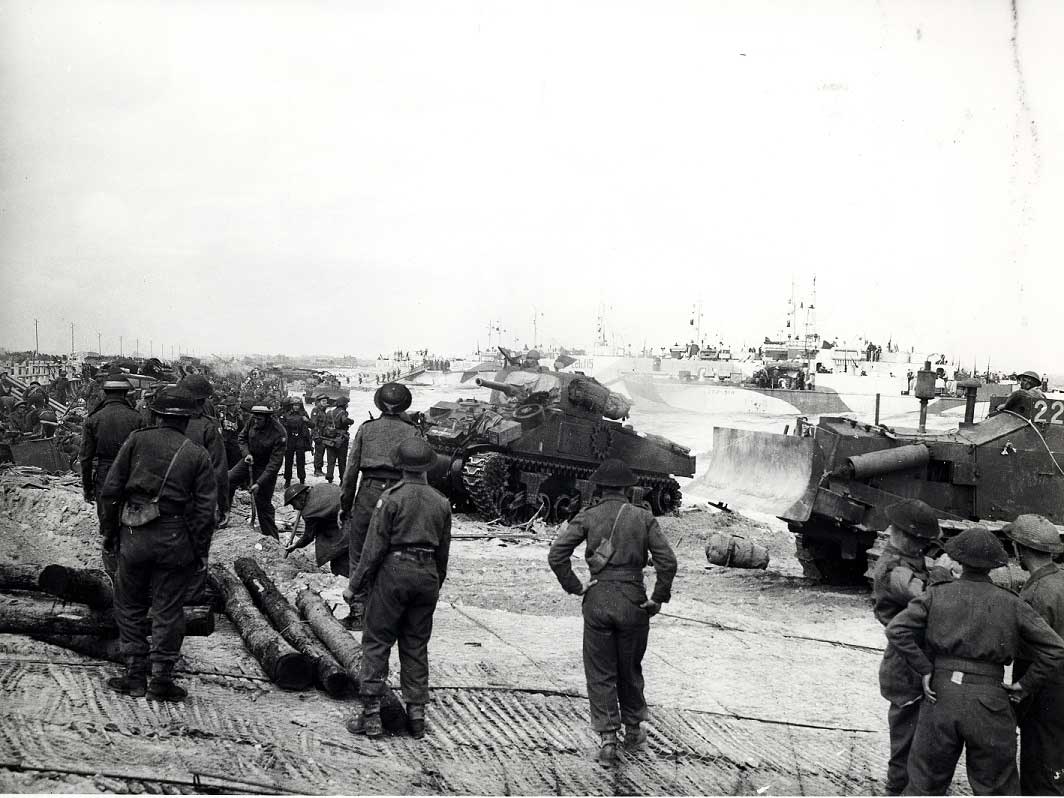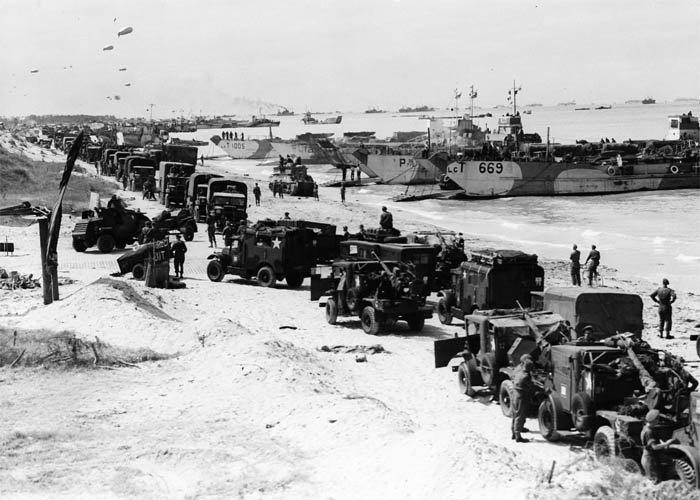

The Canadian achievements on D-Day were remarkable. By the end of the day the 3rd Canadian Division was well established on its intermediate objectives, and had progressed further inland than any of the Allies. Although short of the planned final D-day objectives the Canadians had broken through the 'Atlantic Wall' and smashed the first line of German defences.
The capture of Juno Beach on D-Day was accomplished by very ordinary young Canadian boys. These young men had accomplished what many had thought was impossible. Their courage and determination was the immediate reason for the success in those critical hours. They had found the courage within themselves to endure the fierce and frightening battle. Their determination had pushed them forward to beat the most highly regarded military machine of the 20th century - the German Panzers. They had fought beside their friends, people they had joined up with, trained with and lived with for four years within their regiments. They had developed a bond and loyalty to each other and nobody was going to let the other guy down in battle. Many of these friends did not return from Normandy.

Canadian soldiers and tanks landing at Nan Green beach, Courseulles-sur-Mer, France, on June 6, 1944. (LAC PA-128791)
Fourteen thousand Canadians landed in Normandy on D-Day and to ensure the victory 340 Canadians had given their lives. Another 574 had been wounded and 47 taken prisoner. The casualties were less than expected, but heavy nonetheless. Ross Munro, a Canadian journalist reported: "The German dead were littered over the dunes, by the gun positions. By them, lay Canadians in blood stained battledress, in the sand and in the grass, on the wire and by the concrete forts. I saw friends I had known, men who had joined the army in the first months of the war - and now had died in their first action here on the Norman beach. They had lived a few minutes of the victory they had made. That was all."
D-Day was a magnificent accomplishment for the Allies. The progress on the other
beaches was similar to the Canadians at Juno. The British had come ashore
at Sword and Gold beaches, the 3rd British Division advancing to within
three miles of Caen and the 50th Division was only two miles from Bayeux.
The Americans had established beachheads at Omaha and Utah, despite meeting
fierce resistance at Omaha beach. The Allies were digging in and securing
the bridgeheads to prevent the Germans from pushing them back into the
sea. Soon the Allied bridgeheads would be expanded and joined to form
a continuous front. The Allies had landed more than 150,000 troops in
France by sea and air. Thousands of vehicles, hundreds of guns and about
4,000 tons of supplies had also been landed. More soldiers and supplies
were pouring ashore to continue the advance on D-Day-plus-one. The formidable
Atlantic Wall had been successfully breached.

Allied forces equipment come ashore.
Ahead lay eleven more months of bitter fighting. In June the Canadians
would fight and overcome the brutal killing machine of the 12th SS. They
would stubbornly hold and defend their positions against the vicious German
counter-attacks. They would fight a costly battle for Carpiquet on July
4th before finally taking Caen on July 9th. The Canadians would go on
to fight in the 'Battle of the Scheldt' to open the port of Antwerp. They
would enter Germany as part of Operation 'Veritable'. Finally the Canadian
Army would liberate the north-eastern Netherlands. The Canadians would
make a vital contribution in the Victory in Europe.

Candian soldiers come ashore on D-Day at Bernières-sur-Mer. The house now known as Canada House is in the background.

Candian soldiers come ashore on D-Day at Bernières-sur-Mer. Fourteen thousand Canadians landed in Normandy on D-Day
